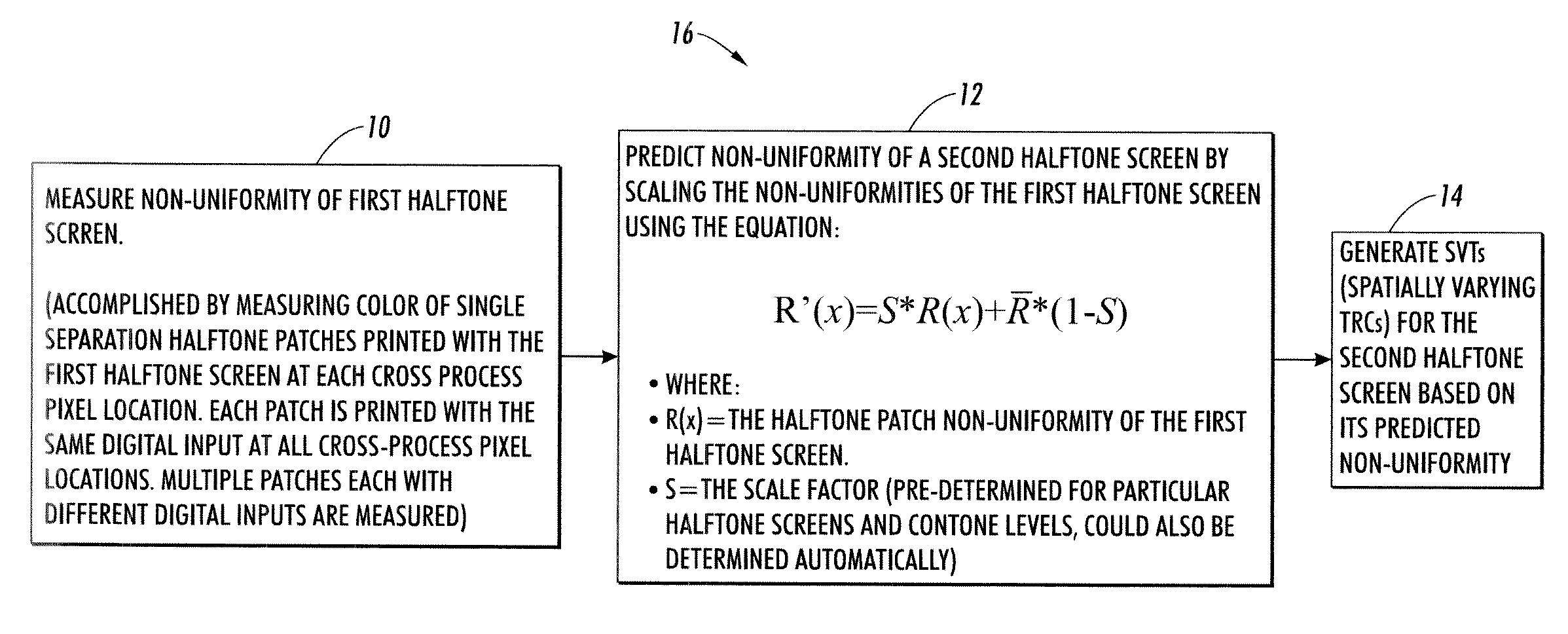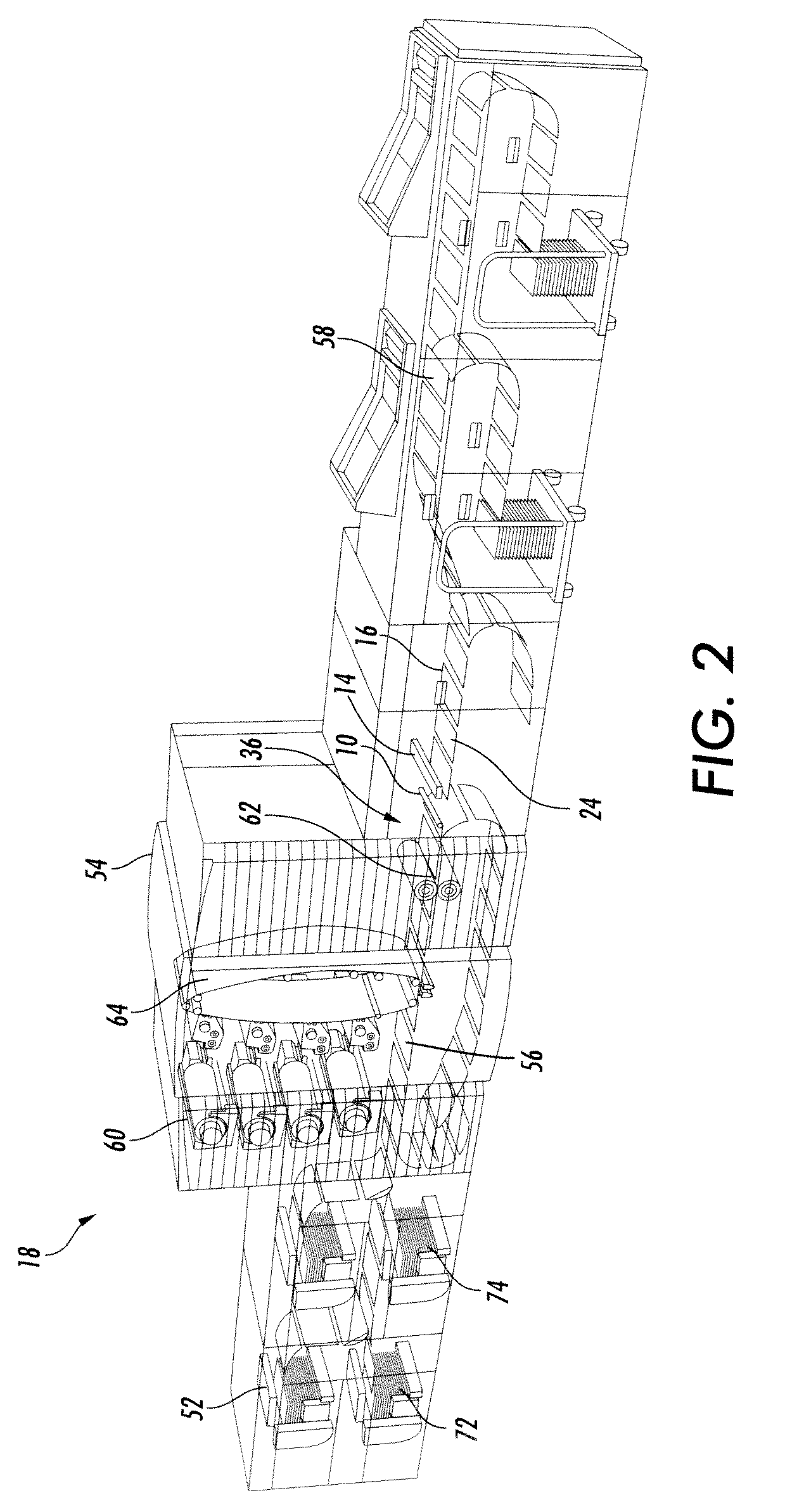Method and system for correlating of uniformity compensations across halftone screens
a technology of uniformity compensation and halftone screen, which is applied in the field of color printing and display systems, can solve the problems of unmanageable number, high cost of characterization, and tendency of colors on printers to drift over time, and achieve reasonable and acceptable trade-offs in uniformity compensation performance, maximizing image quality, and reducing time and cost of making.
- Summary
- Abstract
- Description
- Claims
- Application Information
AI Technical Summary
Benefits of technology
Problems solved by technology
Method used
Image
Examples
Embodiment Construction
[0014]Aspects of the exemplary embodiments relate to a system and method for performance characterization of an imaging device such as a printer and particularly finds application in automated printer calibration and other color management applications wherein a plurality of halftone screens are accessible by the printer for improved accuracy in color imaging. More particularly, the subject embodiments provide a method for correlating uniformity compensations across different halftone screens. It is understood that xerographic cross-process non-uniformities (i.e. streaks) in a print engine scale with screen frequency of the halftone dot, and uniformity characteristics are similar regardless of the halftone screen used for printing. This knowledge enables the prediction of one halftone screen non-uniformity based on the measured non-uniformity of another halftone screen. Thus, by only having to measure the non-uniformity of a single halftone screen, one is able to predict the non-uni...
PUM
 Login to View More
Login to View More Abstract
Description
Claims
Application Information
 Login to View More
Login to View More - R&D
- Intellectual Property
- Life Sciences
- Materials
- Tech Scout
- Unparalleled Data Quality
- Higher Quality Content
- 60% Fewer Hallucinations
Browse by: Latest US Patents, China's latest patents, Technical Efficacy Thesaurus, Application Domain, Technology Topic, Popular Technical Reports.
© 2025 PatSnap. All rights reserved.Legal|Privacy policy|Modern Slavery Act Transparency Statement|Sitemap|About US| Contact US: help@patsnap.com



